The Botanical Garden, “El Castillejo”, is located within the Sierra de Grazalema Natural Park, Biogeográphic Sector from Ronda, which stretches from the Sierra de Grazalema to the Sierra de Loja --comprising all the Mountain range of Ronda, Sierra de las Nieves and Sierra Bermeja--, and characterized by basic soils.
It is one of the botanical gardens of the network, that manages the Board of Andalusia.
Its primary goals are to preserve the plant species from Cadiz, endangered, threatened and endemic species, as well as promoting awareness, by public in general, of human use of the plant environment.
Within its facilities, there is a visitor center, where you implement educational plans, focused on conservation of the flora, the recovery of endangered species and research. Numerous schools and associations frequently visit it, to attend these training activities.
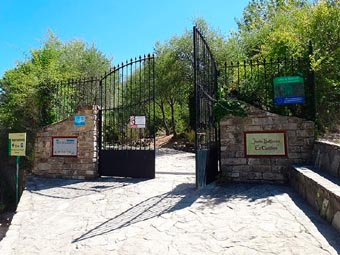
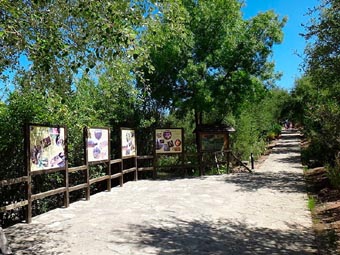
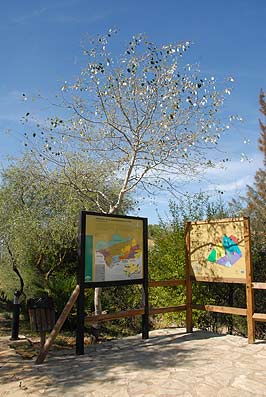
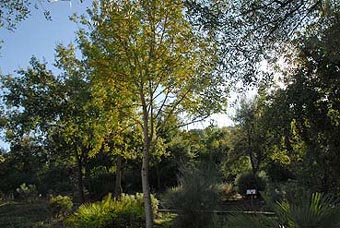
“El Castillejo” Botanical Garden is located in the village of El Bosque (Cádiz). It can be accessed from Cadiz by Jerez de la Frontera and Arcos de la Frontera (A-372), from Málaga by Ronda and Grazalema (A-372) and from Seville (N-IV) by Villamartín (A-371) and Prado del Rey (A-373). It is situated on the outskirts of the village, at its northern end. It is accessed by the stone pavement road, that goes from the fish farm or from the road between El Bosque to Benamahoma (Km. 31), where we find a path, on the left side of the road. Both access have signaling.
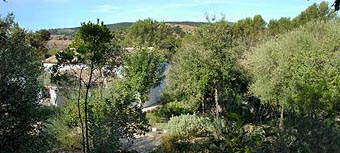
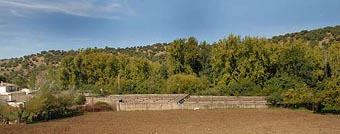
Throughout the visit, we find specimens of the most representative plant species of the main ecosystems of the Sierra de Grazalema Natural Park.
Among the ecosystems represented, we can find the Acebuchal --which forms woodlands, along with other species such as mastic trees, wild roses and myrtles--. It has a high ecological value, as a refuge and feeding ground for numerous birds. Among its uses, highlight the lop and consumption of fruit (the acebuchina) by cattle, firewood and charcoal.
There is also a land full of cork oaks, which is Nestled on acidic soils (low abundance in the Sector of Ronda), move from these enclaves to the holm oak, when the humidity increases. The undergrowth is formed by numerous species, such as myrtle (Myrtus communis) and madrone (Arbutus unedo), olivilla (Phillyrea angustifolia) and ruscos (Ruscus hypophyllum). Alcornocal (land full of cork oaks) degradation results heaths, in wet areas, and thickets, in dry areas
You can find a Grassland, which are stages replacement of holm-oaks wood and thermomediterranean (bioclimatic ground, that you can find in any are of the Mediterranean climate) gall-oaks grove, dry sub-humid ombroclimate to wet, transformed into crops or grazing areas, in low altitudes, up to 900 metres. The representative species would be holm oaks (Quercus rotundifolia), gall oaks (Quercus faginea), wild olive trees (Olea europaea var. Sylvestris) and dispersed carob trees(Ceratonia siliqua), with shrubs as Pistacia (mastic), Phlomis lychnitis (phlox), Phlomis purpurea (matagallo), Daphne gnidium (Torvizco) and Chamaerops humilis (Palmetto), jérguenes (Calicotome villosa), crazy brooms (osyris alba), flammula Clematis, Clematis vitalba and asparagus (Asparagus acutifolius)

There is also a holm-oak wood, which is the most representative plant formation and which occupies biger extent, with dominion of the oak (Quercus rotundifolia), on limestone substrate, in the mesomediterranean ground. The companion species would be barberries (Rhamnus alaternus), broom (Retama sphaerocarpa), peonies (Paeonia coriacea) and honeysuckle (Lonicera implexa) their total adaptation to the characteristics of the Mediterranean climate and its plasticity even allow it to take places with minimum ground like streams and stony slopes. The montanera, or feeding pigs, with acorn, has been until recently, along with production of coal, the main use of oak.
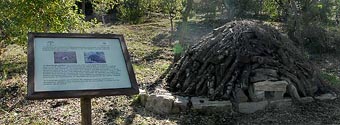
The gall-oaks (Quercus faginea) are in the most humid and warm places (valleys and river beds), where they are mixed with holm-oaks or simply move them. They are ash trees, that are accompanied by shrubs, also deciduous, like Crataegus monogyna (Hawthorn, hawthorn) and wild roses (Rosa sempervirens).
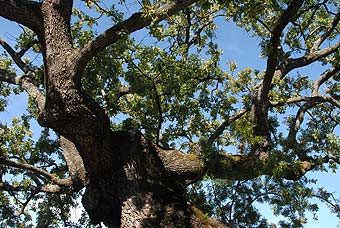
In the rivers of permanent flow, a typical vegetation, called "riberbank forest", is developed: Fraxinus angustifolia (Fresno), Salix eleagnos subsp angustifolia, Ulmus minor (Olmo) and Populus alba (white poplar), Populus nigra (black poplar). They follow the course of streams, because they could not live far from them. Joining them, blackberries (Rubus ulmifolius), rosebush (Rosa canina, Rosa sempervirens), Dorycnium rectum (Unciana) compose a tangle, that becomes the creek in a real green tunnel.
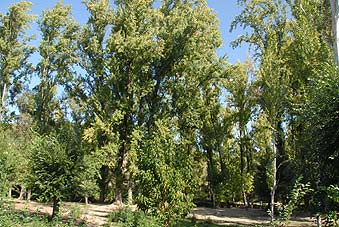
In non-permanent courses and lower courses, are developed oleanders (Nerium oleander) and tamarisks (Tamarix africana), respectively.
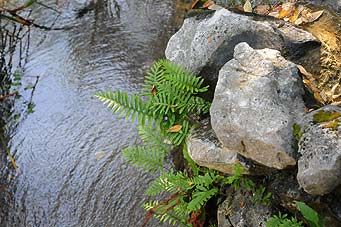
In the Natural Park of El Bosque, you can also find a rupicola vegetation, that grows on the tops of the mountains, rocky slopes and rock crevices has a number of very interesting adaptations, aimed at responding to excessive solar radiation, to the scarcity of land and wind. The rounded, padded, very close to the ground and whitish are dominant. They form the juniper Juniperus communis subsp hemisphaerica, Juniperus Sabina (Sabina creeping), Erinacea anthyllis (Piorno blue), Ononis reuteri, Hormathophylla spinosa (Rascaculos) and Bupleurum spinosum.
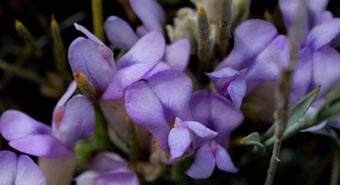
Blue piorno
In the peaks, formed by dolomites, the rupícolas communities are developed, which are interesting, from a botanical point of view, because there are a large number of endemic, rare and endangered flora, as the opium poppy from Grazalema (Papaver rupifragum), African Rupicapnos subsp decipens, Putoria calabrica, Biscutella frutescens, Silene andryalifolia, Saxifraga globulifera or Centaurea clementei.
The most abundant tree is the Abies pinsapo (Spanish fir) and only develop in certain enclaves across the sector as Sierra de Grazalema, Sierra de las Nieves and Sierra Bermeja. During the ice ages, it must have occupied larger areas, but rising temperatures has relegated it to the freshest and shady places of the highest mountains.
The pinsapo is endangered and, therefore, protected by law. The vegetation, that accompanies the pinsapo, is not very abundant: it is mixed with gall, Helleborus foetidus (Ballestera grass), male daphne (Daphne laureola), ivy (Hedera helix), lilies (foetidissima Iris, Iris planifolia orchid and Cephalantera rubra), Blonde pilgrim, blackthorn (Prunus spinosa) and gorse (Ulex baeticus).
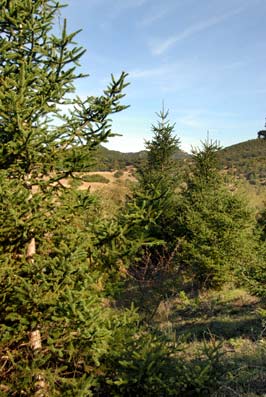
Spanish fir
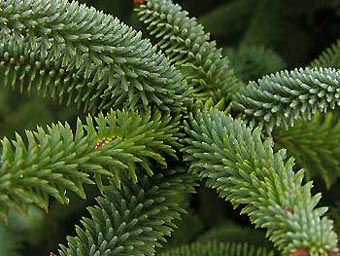
Leaves of Pinsapo (spanish fir)
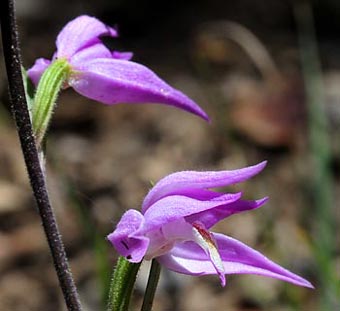
In the south of the province of Malaga, appear outcrops of metamorphic volcanic rocks, called peridotites. Its degradation leads to coils, that cause not only a poor soil, but is toxic, due to the high concentration of heavy metals. An interesting group of species has adapted to live in these extreme conditions.
But there is also a group of endemic species, such as: Echinospartum algibicum, Erodium recoderi, Papaver rupifragum and Allium Rouyi.
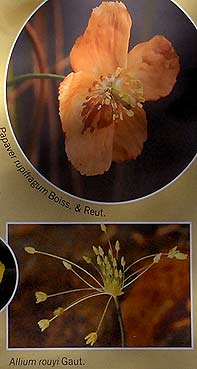
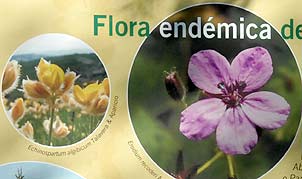
This is another part of the Botanical Garden:
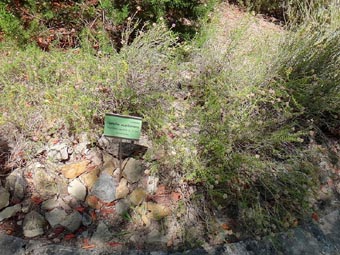
Well, I hope that you want to visit this Natural Park. In that case, I am going to tell you that “El Castillejo” Botanical Garden opens its doors, to the public, from Tuesday to Sunday, from 10 to 16 h, from October to April.
During the summer season, from May to September, the hours are from 10 to 14 h (in the morning) and 18 to 20 h. (evening). Admission is free.
The Botanical Garden is situated in:
Avenue “El Castillejo”, without number.
11670 – El Bosque (Cádiz)
Well, until my next post, kind regards,
Luis.
Sponsored by Costaluz Lawyers.
Please click below:
